For Professionals, By Professionals

Discover ProX PC for best custom-built PCs, powerful workstations, and GPU servers in India. Perfect for creators, professionals, and businesses. Shop now!
SERVICES
WE ACCEPT









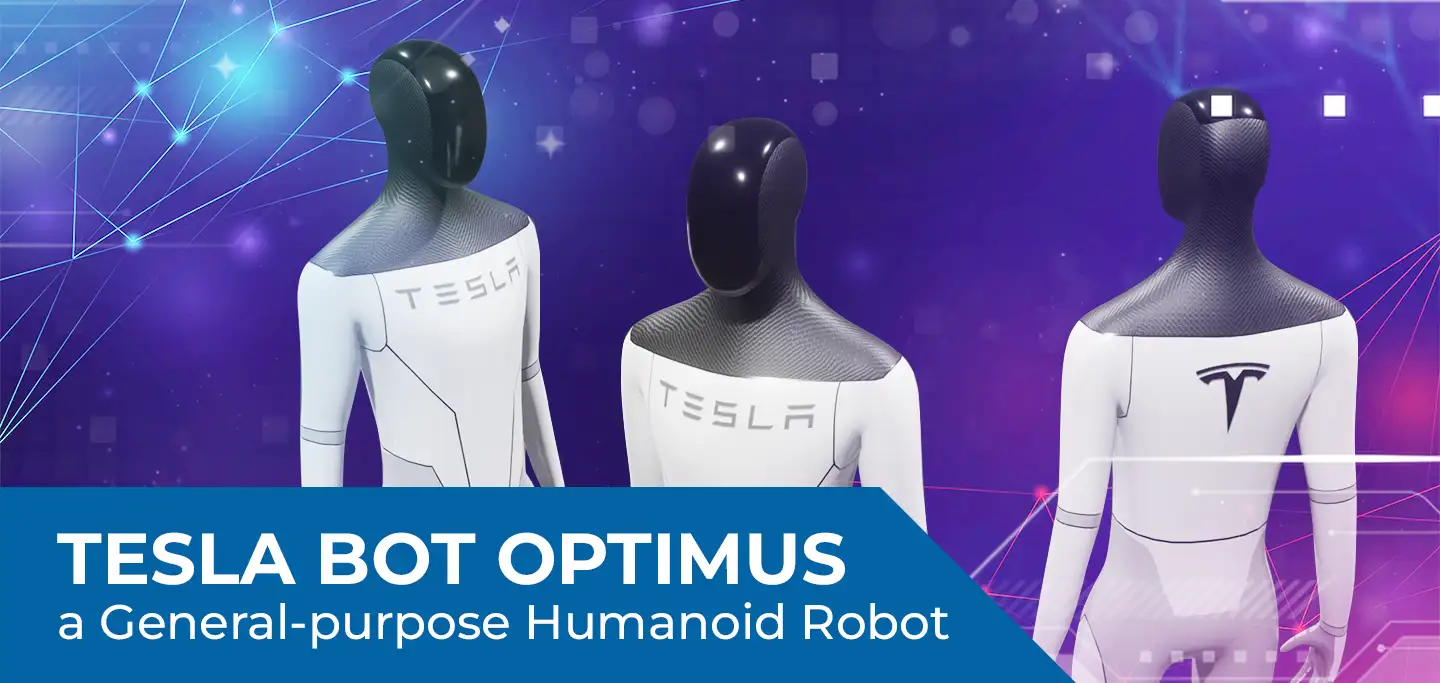
Contents
In 2022 E. Musk presented the latest prototype of the Tesla bot humanoid robot. It belongs to a new class of humanoid robots that are applicable in homes and factories. A lot of startups around the real world are developing Artificial Intelligence (AI)-based robots with different purposes, and they mainly focus on social interaction.
The huge progress in AI-enabled by deep learning enhances robots’ interactions with people in all environments. Low-cost 3D sensors, driven by gaming platforms, have enabled the development of 3D perception algorithms by multiple researchers worldwide. That enhances the design and adoption of home and service robots.
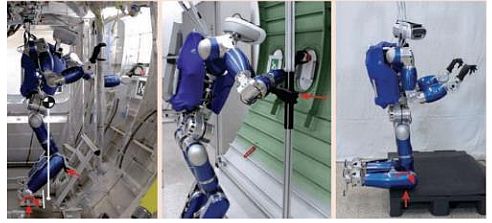
Collaborative Humanoid Robots
Tesla Bot Specifications
The Tesla bot Optimus is important because it is not revolutionary. Instead, it’s a normal technology development to solve business problems.
In its introduction, it stayed on a stand and waved to the audience, showing its wrist and hand range of motion. The CEO, Elon Musk said that the prototype contained battery packs, actuators, and other parts, and recently it is ready to walk.
Hardware Design
Tesla Bot is approximately the same size and weight as a human, weighing around 60 kg and height 170 cm. The robot can function for several hours without recharging. In addition, Optimus robot can follow verbal instructions to perform various tasks, including complex jobs such as picking up items.
With such a construction, it can lift up to 20 kg, but with stretched arms, the payload capacity is reduced to 10 kg. Optimus is designed to have hands that resemble those of a person, providing a high level of ability and flexibility.
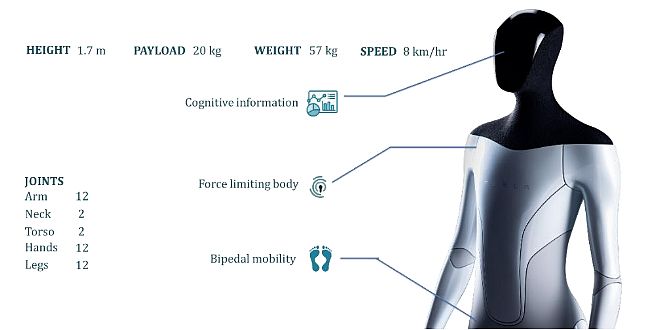
Tesla Bot Specifications
The Tesla bot possesses two legs and has a maximum speed of 8km per hour. The Optimus incorporates 40 electromechanical actuators of which 12 are in the arms, 2 each in the neck and torso, 12 in the legs, and 12 in the hands.
Additionally, the robot has a screen on its face to present information needed in cognitive interaction. Some original Tesla features are embedded into the robot, such as a self-running computer, autopilot cameras, a set of AI tools, neural network planning, auto-labeling for objects, etc.
Sensors and Capabilities
Sensors act as the robot’s eyes, ears, and skin, constantly gathering data about the environment. Here’s the list of some important sensor types that Tesla bot possesses:
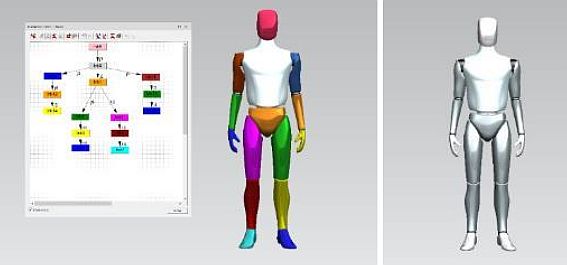
Kinematic Model of the Tesla Robot
To perform actions, the Tesla bot needs actuators that translate the information received from sensors into physical movement. In addition to hydraulic, magnetic, and thermal actuators, these are the most common types of actuators that it can possess:
Deployment in Homes
One of the main applications is to integrate the Tesla bot into households so that it performs specific tasks. The robot will build a complete understanding of its environment, enhanced by shared 3D scans of the home, and its perception capabilities.
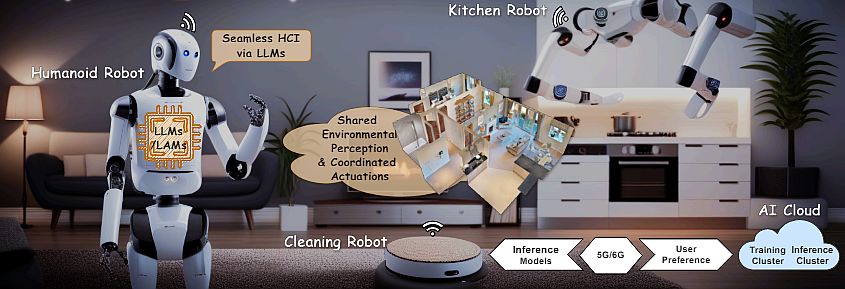
Tesla bot Deployment in Home Environment
Moreover, the bot will be accustomed to the profiles of household members, recognizing their habits, hobbies, and preferences, and fostering personalized interactions.
Tesla Bot’s AI and Interaction Capabilities
Communication robot humans utilize advanced verbal interfaces powered by Large Language Models (LLMs), which are flawless and intuitive. Additionally, the Tesla bot will interact with nearby edge devices, facilitating access to servers or cloud-based resources.
The robot will get regular model inference updates, and will stay current with the latest developments, ensuring high performance and adaptability:
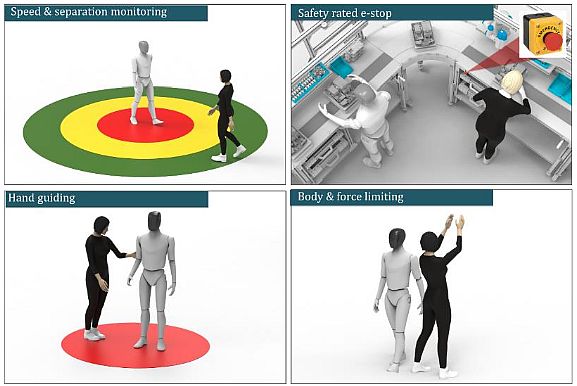
Interaction with Humans in Home Environment
Challenges in Home Applications
The adoption of the Tesla bot within our homes faces both appealing possibilities and significant challenges. Here, we present the possible obstacles that should be resolved.
Additionally, the development of testing robots for potential unwanted outcomes is crucial to ensure their safe and responsible operation within our homes.
Tesla Bot Deployment in Manufacturing – Factories
Researchers A. Malik et. al (2023) examined the application of the Tesla bot in an industrial, i.e. manufacturing environment. Their framework defines the tasks that the robot’s involvement can successfully solve.
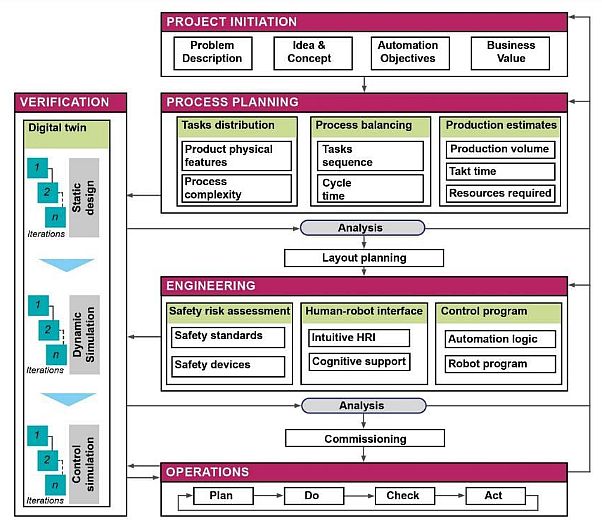
Framework to Integrate Humanoid Bots in Manufacturing
They developed an initial concept of the automation system and documented the automated tasks. It helped them to make an initial financial assessment. The deliverable from this step was a list of tasks and objectives of the robot involvement. Deliverable also defines a success criterion for their automation project.
A task is suitable for a Tesla bot based on the physical characteristics of the parts/components. Characteristics can be shape and material features, variability (of tasks), parts presentation, and injury risks to humans.
Case Study and Simulation
The set of robot duties included various automation arm-based tasks, as the robot has: i) two arms; ii) mobility; iii) collaboration ability with humans; and iv) safety features. The Tesla bot possesses six degrees of freedom, a payload capacity of 10 kg, and a reach of 1,000 mm for each arm. It also features a 5-finger human-like hand gripper.
The proposed workplace contained five workstations, of which robots operated two and three were manual. Once an initial task identification has determined the types of tasks (robotic or manual), a refined process establishes a balance in the process.
Lean assembly balancing means the assignment of tasks to workstations and ensuring that no workstation becomes a bottleneck. It minimizes the idle time and compliance with the busy time. The figure and the diagram below show the proposed assembly workplace.
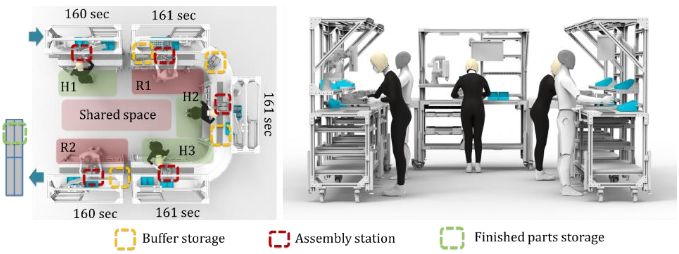
Robot Assembly Line
The simulation helped the researchers to perform the following.
The researchers proved that the use of the Tesla Optimus bot can reduce up to 75% of manual assembly time. However, because of the task interdependence, they automated only 60% of the total tasks in the study. Additionally, they also automated the material handling tasks, which account for 60 minutes in total in a shift.
Potential Manufacturing Applications
Researchers envision the following Tesla bot manufacturing applications:

Task Distribution in the Simulation Experiment
Implications for Human-Computer Interaction
The modes of interaction between humans and robots depend on time and space sharing in a team scenario. In the case of Tesla Bot, there can be 4 forms of interaction:
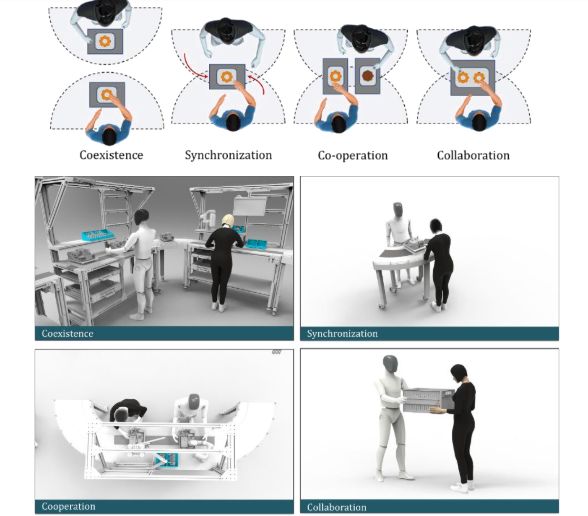
Forms of Interaction in Manufacturing Environment
What’s Next?
Because of its flexibility, the Optimus Tesla robot can become a ubiquitous part of the home and manufacturing environments. The progress of autonomous robots will create intelligent home and work assistants. They will understand the individual needs of their users. Therefore, they will enhance the entire human-robot relationship.
For more info visit www.proxpc.com
Related Products
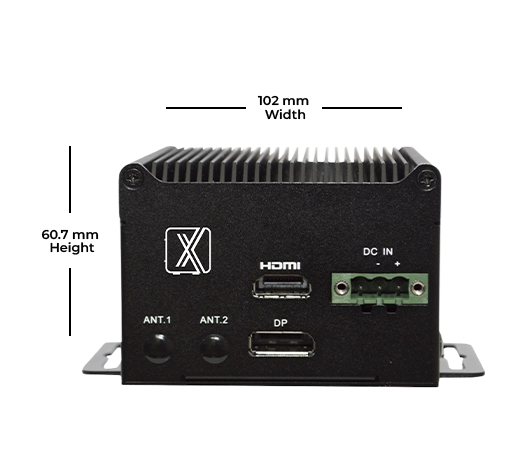
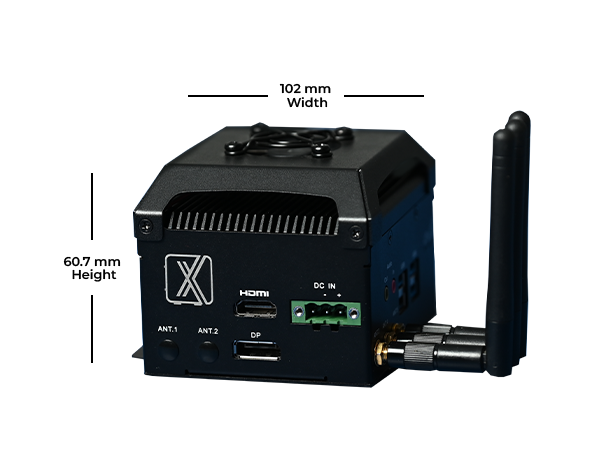
Share this: